Alcide Droz and his sons built a large factory on Rue des Marronniers in Saint-Imier around 1879, and this is the final factory pictured on the 1900 postcard that kicked off this series. The brand founded by Droz & Cie., Berna, would be taken over by Ernest Degoumois and become a popular maker of timers in the pre-war period. It was acquired around 1930 by the Jeanneret family and combined with Leonidas, one of the great chronograph brands. Although no longer used as a factory, the last building on our 1900 postcard still stands today in Saint-Imier.

Les Grandes Fabriques d’Horlogerie de Saint-Imier
This is part of a series of posts about Les Grandes Fabriques d’Horlogerie de St Imier. Due to the detailed and complicated research required, it will likely take months to complete, so please subscribe to the Grail Watch newsletter to be kept up to date!
- Introducing the great watchmaking factories of Saint-Imier
- The Evolution of Watchmaking Architecture: Rue des Roses 2 and Rue du Stand 35
- Excelsior Park: Usine du Parc
- The Rise of Mass-Produced Watches at Les Longines, Saint-Imier
- From Atelier to Factory: Usine Centrale, Saint-Imier
- Droz and Degoumois: Berna Watch Factory
- Rue de la Clef 44: Fritz Moeri’s Moeris
- The Rise and Fall of Leonidas and the Beau-Site Factory
- Gygax & Meyer
- Schweingruber
- Smaller Factories of Saint-Imier
Each of these factories has a story to tell, both about the products produced there and the watchmaking industry at the turn of the 20th century. We will explore the transition from home to factory, the rapid rise of corporations, the transition from water and steam to electric power, the great Jeanneret family, and more!
The Droz et Perret Factory at Les Jonchères
Alcide Constant Droz (1825-1887) and Henry Perret founded a watch assembly and sales company in 1864. Droz et Perret were initially located on Rue du Stand, near Place du Marche in the center of town. The address is shown as Rue de la Cure in 1871, but this refers to the same street on the northern side of the Place du Marche so it could have been a simple renaming instead of a move.
The company is noted as a producer of watches with a pendant winding mechanism, as opposed to key or button winding.
By 1879, Droz et Perret built a large factory on Rue des Marronniers, near the then-new railroad line that linked the Saint-Imier valley with La Chaux-de-Fonds and Biel/Bienne. This area was then known as Les Jonchères (“the rushes”) but would soon be developed as the watch industry expanded in Saint-Imier after the turn of the century. It overlooked Usine du Parc, which was soon acquired by the Jeanneret family, and their machinery also used steam power.
The factory was a landmark, with a modern design that would later be adopted by the Longines factory in the valley below. Droz et Perret’s factory at Marronniers 20 was the largest in Saint-Imier, but it was soon surpassed by Francillon’s Longines, which grew dramatically over the following decades. Still, it would be an important part of Saint-Imier watchmaking for 50 years.
The Waterproof Watches of Alcide Droz et Fils
In 1883, Perret left the company or died and it was renamed Alcide Droz et Fils. Together with his sons, Louis and Constant, Alcide Droz continued production of small pendant watches, now using his own in-house movements.
That same year, the firm registered its brand and logo with the Swiss authorities, adding the word “Imperméables” (“waterproof”). This was a major development for the entire industry, and was based on Alcide Droz’ greatest invention: A sealed case and screw-down crown!
The first crown-winding watches appeared in the 1840s and 1850s at the hands of watchmakers like Jean Adrien Philippe and Antoine LeCoultre (namesakes of Patek Philippe and Jaeger-LeCoultre, respectively), and most watches through the end of the 19th century were open to the elements. “Messrs. Pettit and Trappett” of London exhibited the first known waterproof watch in 1851, suspending it in a glass globe of water surrounded by fish. A number of American firms also produced watches in the 1870s with a screw-down cap over the crown.
Protecting a commercial watch from the incursion of water and dust was not considered a possibility until the 1870s, when Englishman Aaron Dennison patented a sealed case with a screw-down bezel over the dial. The American watchmaker Ezra C. Fitch patented a similar watch in 1879 with a screw cap over the crown and in February 1881 patented the first true screw-down crown. Fitch became President of the American Watch Company of Waltham, Massachusetts and produced these watches commercially, but with little success.

Image: West End Watch Co.
In 1883, Alcide Droz received a Swiss patent for his own keyless works and screw-down crown system. Partnered with a novel sealed case, the resulting “Imperméable” watch was the signature product of the Droz factory in Saint-Imier in the 1880s. As discussed in depth by David Boettcher, Droz’ patent was similar to Fitch’s but different enough in important aspects to be registered in the UK and the United States as a new invention. Amusingly, Droz exhibited their watches in a fishbowl, the exact way Pettit and Trappett did in London 30 years earlier!
The so-called waterproof watches, from MM. Alcide Droz et fils, in Saint-Imier, also deserve to be mentioned; they could hardly escape the attention of visitors, immersed as they were in a jar, in the company of perfectly alive fish, who were no doubt very happy to be able, for the first time in their life, to realize the march of time to within a few seconds. The crown of these watches is screwed, which completely prevents the access of water to the movement, and, what is perhaps even more important, that of dust. Only, we understand that it is necessary to unscrew the crown, either to go back up, or to set the time, an operation which is done quite easily.
Journal Suisse d’Horlogerie December 1884
West End and Berna
Two brands created by Alcide Droz would long outlive his firm. Berna and West End followed different paths, but both continued into the modern era. Indeed, West End remains one of the best-known Swiss brands in India to this day!
On October 16, 1885, Alcide Droz et Fils trademarked “West End Watch Co.” This was the result of a joint business venture created the prior year in Bombay, India with Arnold Charpie. West End was a distributor of branded watches in India, many of which were produced by the Droz factory in Saint-Imier. It is said that the name refers to the neighborhood in London where Charpie would stay when visiting the capital of the British Empire, and it must have appealed to the locals because it quickly became one of the leading brands in India.
Alcide Droz died on October 25, 1887, leaving his sons to continue the company. It was soon re-registered as Droz & Cie, and production was expanded. Arnold Charpie retired that year as well, with Droz taking complete ownership of the Indian firm, now officially named West End Watch Co.
Alcide Droz et Fils had filed their intent to use the brand “Berna”, and this was officially registered in 1887. The company used a logo featuring a bear with a flag, and the name was that of the Swiss Canton that contained Saint-Imier. The Berna brand would continue in active use for nearly a century, as we shall see.
The 1880s were turbulent for Swiss watchmakers, however, and the sons had different interests. In 1891, West End Watch Co. was split off as a joint venture between Jacques-Arnold Amstutz and Constant Droz known as Droz & Amstutz.
This left Louis Droz solely in charge of Droz & Cie. By 1899, his company was described as “manufacture of anchor watches of 12 to 26 lines, of all kinds. Chronographs. Guaranteed quality.” The company had also added new brands, “Jonchères” and “Maxim”, in addition to Berna. They produced quality watches in gold, silver, and steel, including specialized watches for the blind.
The Fall of Droz & Cie
This brings us to the Tir Cantonale in 1900, the event commemorated by our postcard. By this point, Droz & Cie. was the second largest watchmaking factory in Saint-Imier, overlooking Usine du Parc, Fritz Moeri’s new factory (then under construction), and Les Longines on the west side of town. It was steam-powered like those others, and featured the modern architecture favored in that period.
Droz & Cie seemed just as successful as these other watchmakers, but Louis Droz was not quite the manager or inventor his father was. In 1904, Droz & Cie was incorporated as a joint stock company named Fabrique d’Horlogerie Berna. Droz exchanged his shares in the West End Watch Co. for an investment in his new firm, and set up an exclusive distribution agreement for India.
Although the Berna factory could only distribute their popular watches in India through West End, this agreement was not exclusive in the other direction. Indeed, Longines would soon begin producing watches for West End, and this meant trouble for the Berna factory. Fabrique Berna was bankrupt by 1907.

of a Watchmaking Manufacture
of a dwelling house
of a Farm with land and building land
La Fabrique d’Horlogerie. „BERNA” S. A. in liquidation, in St-Imier, offers for sale, by mutual agreement, all its buildings located in St-linie’r, consisting in particular of:
A watch factory with all that depends on it, such as: goodwill, equipment used for its operation, machines, tools, goods manufactured and in the course of manufacture, trademarks, patents, etc.
A magnificent property comprising a large dwelling house with its amenities, gardens and outbuildings, plus
An adjoining farm, with cultivable land and building land
Several fields located in the area of St-linier and which can also, by their advantageous situation, be used as building land
Total capacity of buildings for sale: 6 hectares, 31 ares, 66 centiares.
Total cadastral estimate, not including machinery, tools and other buildings by destination,
Fr. 274,730.
Entry into immediate enjoyment or according to convenience.
Favorable conditions. Send offers and requests
information to the undersigned notaries, delegated by the
liquidation commission.
St-lmier, April 21, 1908.
By commission:
Adh. Jolissaint, note A. Favre, not.
La Fédération Horlogère April 26, 1908

of a Watchmaking Manufacture
and a dwelling house with farm, fields and building land
Monday June 22, 1908, from 2 hours sharp in the afternoon, at the Hôtel des XIII Cantons, in St-Imier, there will be a public auction of the buildings designated below, located in St-linier, and dependent on the “BERNA” Watch Factory (SA) in liquidation, at the said place, namely:
A watch factory with all that depends on it, such as: goodwill, equipment used for its operation, machines, tools, goods manufactured and in the course of manufacture, trademarks, patents, etc.
A magnificent property, comprising Large dwelling house with its amenities, gardens and outbuildings, plus AN adjoining FARM, with cultivable land and building land.
Total capacity of the buildings for sale: 6 hectares 31 ares 60 centiares.
Total cadastral estimate: Fr. 274,730.
Estimate of machines, tools and other buildings by destination: Fr. 76,894.
Entry into force: July 1, 190g.
Favorable conditions.
Deposit of the specifications in the study of Me Favre, undersigned notary, from June 8, St-Imier, June 3, 1908. –
By delegation of the Liquidation Commission
Adh. Jolissaint, not. A. Favre, not.
La Fédération Horlogère June 14, 1908
The grand factory at Marronniers 20, the Berna brand, and even Louis Droz’ household were offered for sale in 1908. Priced at 275,000 francs, no buyer was found. A second offer was made a few months later which would see the machinery and tooling sold separately for 77,000 francs, a dire state of affairs indicating that production was stopped entirely.
Ernest Degoumois, High-Life, and Berna Watch Co
Learn more about Ernest Degoumois in this companion article: Rue des Roses 2 and Rue du Stand 35

Image: La Fédération Horlogère March 15, 1903
Berna was re-established with new investment from Saint-Imier watchmaker Ernest Degoumois in 1909. Degoumois was an experienced and successful watchmaker, established in the town as early as 1869. He then produced ultra-thin watches under the High-Life brand at the busy factory complex at nearby Rue du Stand starting in 1900. The High-Life watch was quite popular in the pre-war period, with an attention-grabbing thin profile and fine finishing. This gave Degoumois access to capital and connections that would transform Berna.
Degoumois relied on High-Life as a distributor and marketer, and brought in new management talent. His choice of Constant Scheimbet to represent Berna through a sales office in La Chaux-de-Fonds appears to have been a wise one, and soon High-Life was selling the products of the Berna factory as well as those of Unitas in Tramelan. The Berna Watch Co. produced a wide variety of watches, including the chronographs and sports timers then in vogue. It is likely that the company leveraged the production of other Saint-Imier companies at first, since they did not previously make ebauches of this type, but later developed their own.
The new Berna Watch Co was much more innovative than it had been under the sons of Alcide Droz, registering dozens of patents for movements, cases, and dials through the 1910s. The company also became involved in competitions, placing third in Saint-Imier’s test in 1910.
Berna appears more focused on chronographs and sports timing later in the decade. They patented a chronograph mechanism in 1913, with follow-on inventions nearly every year after this. As seen in the above advertisement from 1916, “Compteur Berna” produced both standard and split-seconds chronographs and stopwatches.



Indicateur Davoine 1927
Berna maintained their Maxim and Jonchères brands and would later add Marna, Va Bien, and Chronoberna. Berna also produced other novelties including a 24-hour watch and specialty stopwatches for industrial use. By 1920 they even offered a 1/100 second stopwatch!
These specialty watches would become the new focus for Berna in the 1920s. As we see in an interesting letter to the editor of Journal Suisse d’Horlogerie in 1922, American Frederic Taylor’s scientific approach to factory production was sweeping the globe at this time. So-called “Taylorization” required specialist timing devices to optimize industrial processes, with high legibility, a stop/restart pusher, and both 1/60 and 1/100 minute markers. As we can see at right, Berna was ready with just such a watch, patented around 1920.
But all was not well at the Berna and High-Life in the 1920s. Despite strong sales, the company was not making much profit, and Degoumois blamed the company’s management. Bernard Gabus-Quartier was a successful businessman from Saint-Imier who had moved to La Chaux-de-Fonds and become director of Berna and High-Life in 1922. Degoumois accused him of using company money to pay his own personal expenses and debts, draining the company’s coffers. On March 2, 1928, Gabus declared bankruptcy and Berna Watch Co. soon followed.
Despite legal actions from Degoumois, Berna was insolvent. It is unclear what the result of this lawsuit was, but both Degoumois and Gabus continued in the industry for another decade, participating in civic and industry activities until their deaths in 1941 and 1951, respectively. The High-Life Watch Co. was no so lucky, and was dissolved in 1931.
Bourquin, Jeanneret-Droz: Leonidas, Junior, and Berna
The factory at Marronniers 20 was closed along with Degoumois’ company, but Berna would continue for decades as a companion to another famous brand: Leonidas.
Julien Bourquin began his career as a watchmaker in Saint-Imier in 1841 and worked at his shop on Grande Rue until his death in the 1880s. His workshop was taken over by his son, Ferdinand Bourquin (1850-1904) by 1886, and he quickly began expanding the operation. By 1895, Bourquin was making watches using the brand “La Populaire”, including smaller models for ladies as well as simple chronographs and stopwatches. After a brief stint alongside Ernest Degoumois at the Rue des Roses 2 factory, Bourquin constructed a large new facility in the vacant Beau-Site area just northeast of town.
This new factory at Rue de Beau-Site 6 would soon become known as the Léonidas Watch Factory, reflecting the name used on some of its products. Ferdinand Bourquin had spent some years in Russia, selling watches to the aristocracy along with Paul Buhré and H. Moser & Cie. of Le Locle as well as the latest incarnation of the famous Breguet factory, and focused on fine watches in gold cases for that market. He established workshops in Warsaw, Poland and St. Petersburg and managed the company from Saint-Imier. The company continued after Ferdinand’s death in 1904 but faced sales pressure as troubles in Russia mounted, and Léonidas was forced into bankruptcy in 1911. Most elements were liquidated far below cost, leaving little room for the interim management to develop.
The assets of Léonidas were purchased in 1912 by Constant Jeanneret-Droz (1858-1916), who soon set things right. Léonidas would be the third great house founded by the sons of famed watchmaker Jules-Frédéric Jeanneret, along with Excelsior Park and Moeris. His son Charles Jeanneret (1892-1979) took over the firm later in 1912 and would lead the company for decades, with his brother Ernest being technical director. They combined Léonidas with their father’s existing brand, “Junior”.
The Jeanneret brothers saw an opportunity in the troubles faced by the Berna Watch Co. and purchased the assets of the firm by 1930. They did not purchase the factory at Marronniers 20 and instead moved Berna into a building at Beau-Site 8, next to the existing Léonidas factory. Berna replaced Junior as the lower-end offering from the Beau-Site factory.
One interesting element added to these watches in the 1920s was a “spare parts” compartment in the movement. This was also found on Excelsior Park movements at this time, which was owned and operated by Robert-Henri Jeanneret, the cousin of Charles and Ernest Jeanneret. There is some indication that this conflict fanned tensions between the formerly-close Jeanneret family in Saint-Imier and their “cousin” factories, Leonidas and Excelsior Park.
Berna would continue alongside Léonidas over the following decades and remained independent after its sister company was purchased by Heuer in 1964. After this, the Beau-Site complex was known only as the Berna Watch Co. though it was still used by Heuer-Leonidas. Berna would produce waterproof watches in the 1960s and their advertising at this time reflects the “goldfish bowl” stunt pioneered by Pettit and Trappett and Alcide Droz a century earlier.

Europa Star 26, 1964
The original factory at Marronniers 18 and 20 was not used as a watch factory again after the purchase of Berna by the Jeanneret brothers. It was eventually renovated to become an apartment building, and it remains used for housing today. It is located next to the main CEFF building, which is the successor to the watchmaking school in Saint-Imier. It is likely that generations of watchmakers have lived in the original Berna factory while studying or later while working for the many watch factories of Saint-Imier.



Image: CEFF
The Grail-Watch Perspective
Berna is perhaps the greatest forgotten watch brand of Saint-Imier, and the Droz factory on Marronniers 20 is just as unknown. Even in this watchmaking town, the old factory has no commemorative plaque and isn’t featured on walking tours. But it was the first large and modern factory in Saint-Imier and should be remembered along with the waterproof pocket watches and industrial control stopwatches produced there. Equally important is the involvement of industry pioneers Alcide Droz, Ernest Degoumois, and the Jeanneret family, and the later integration of Berna with Leonidas.
References
I recommend reading David Boettcher’s article on the West End Watch Co. for more detail on this important brand.
Special thanks to VinSer of NAWCC for an important correction on the meaning of “remontoir au pendant”.
Berna Stopwatches for Taylorization
Berna was a key producer of stopwatches for scientific factory production, and their 1/60 and 1/100 stopwatches were widely used during this revolution in manufacturing. The following letter outlines the trend and the watches.

Chronographs for measuring working time
Under this title, in a previous issue, the Journal suisse d’Horlogerie et de Bijouterie (XLVII, 136), reported an article from the Deutsche Uhrmacher-Zeitung. The latter pointed out that modern industry seeks to intensify industrial production by checking the duration of the various operations necessary for manufacturing. In a word, it is the practical application of the American methods of “Taylorization” that our industrious and practical neighbors tend to popularize.
For this purpose, a German committee, says our honorable colleague, asks for the construction of chronoscopes fulfilling certain conditions which I take the liberty of recalling here:
1. Have a large dial with division into minutes and hundred minutes. Arabic numerals. Great stability of the movement and of the cage;
2. Allow the pendulum to stop using a lever located to the left of the pendant. When the lever is removed, the watch should start moving again without the hands returning to zero. Enable the hands to be reset by pressing the crown;
3. The division on the minute fraction dial must be black on a white background; the division of the minute dial will be black on a yellow background.
The proposals which should inspire the innovator and are represented by the various pictures accompanying this article, come first to strike our attention. We see, expressed by these illustrations, the need for easy reading and the central totalizer seems desired, as shown by figs. 1 and 3.
I will take the liberty of pointing out that this very particular arrangement is the subject of a patent, property of the Berna Watch Co. factory, in Saint-Imier. The attached illustration represents a current model, established according to this protection by this mason specialized in the manufacture of chronoscopes; we are in the presence of the ideal type sought by the German committee and are happy to present it. This meter is provided in the center with a push or lock reset device, capable of being established on the right or on the left as required. Stopping and starting the movement is obtained by means of the crown; the watch can start moving again without the hands returning to zero. The problem posed by our colleague is completely solved by this model, because the question of the colors to give to the dial could obviously be established according to the requests.
H. CHAPONNIÈRE
Droz et Perret



Droz et Fils


Droz et Cie





Berna Watch Co.
























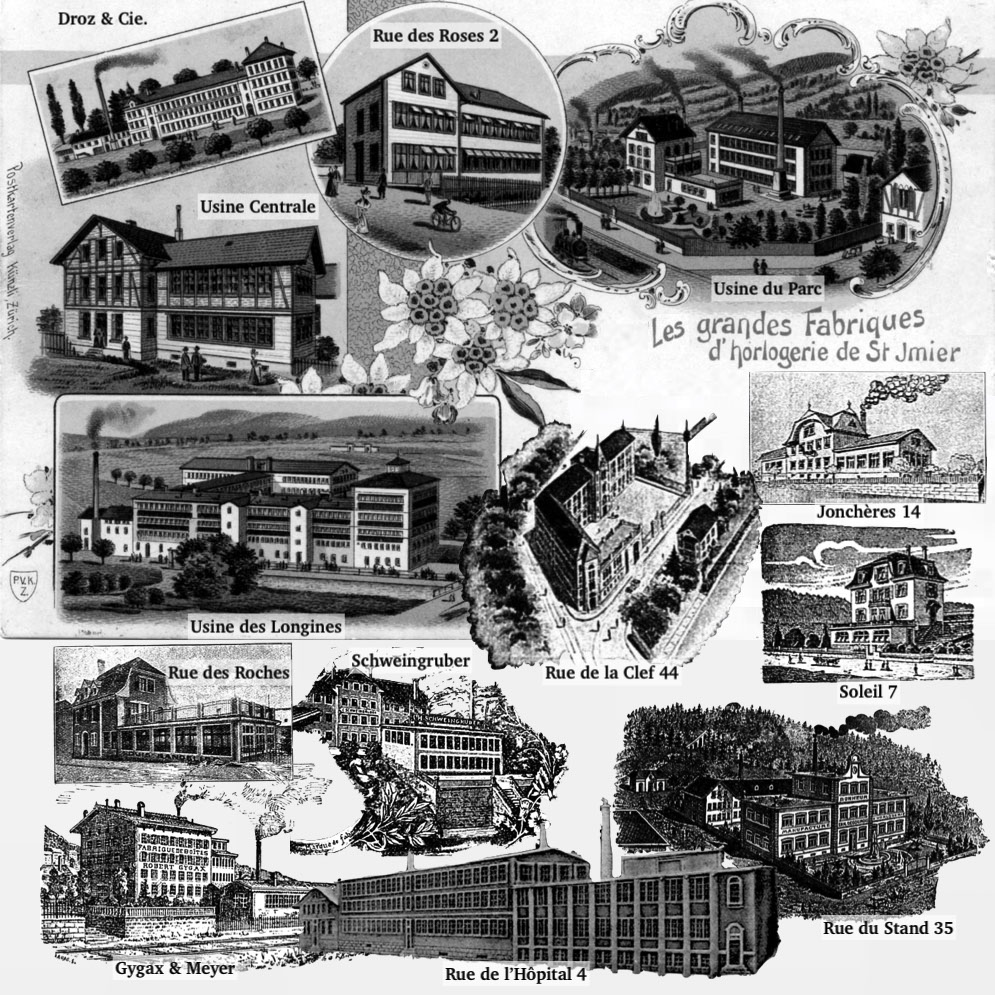
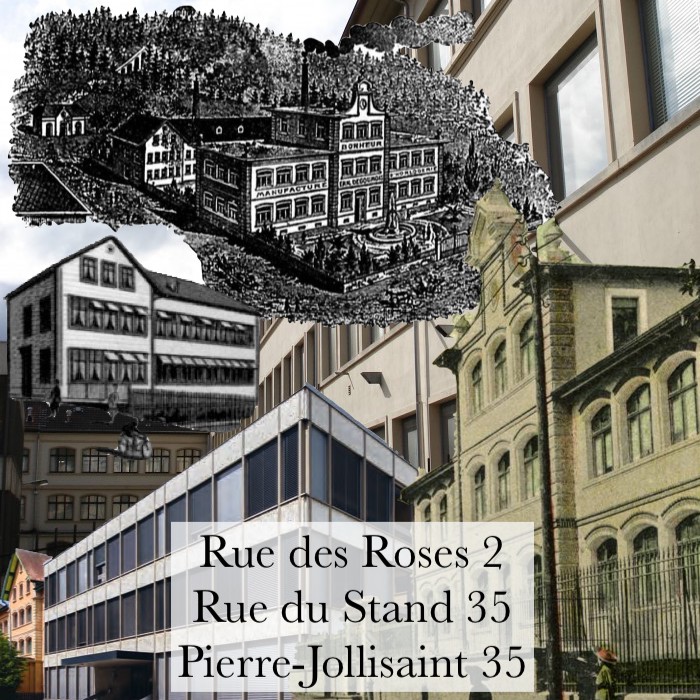
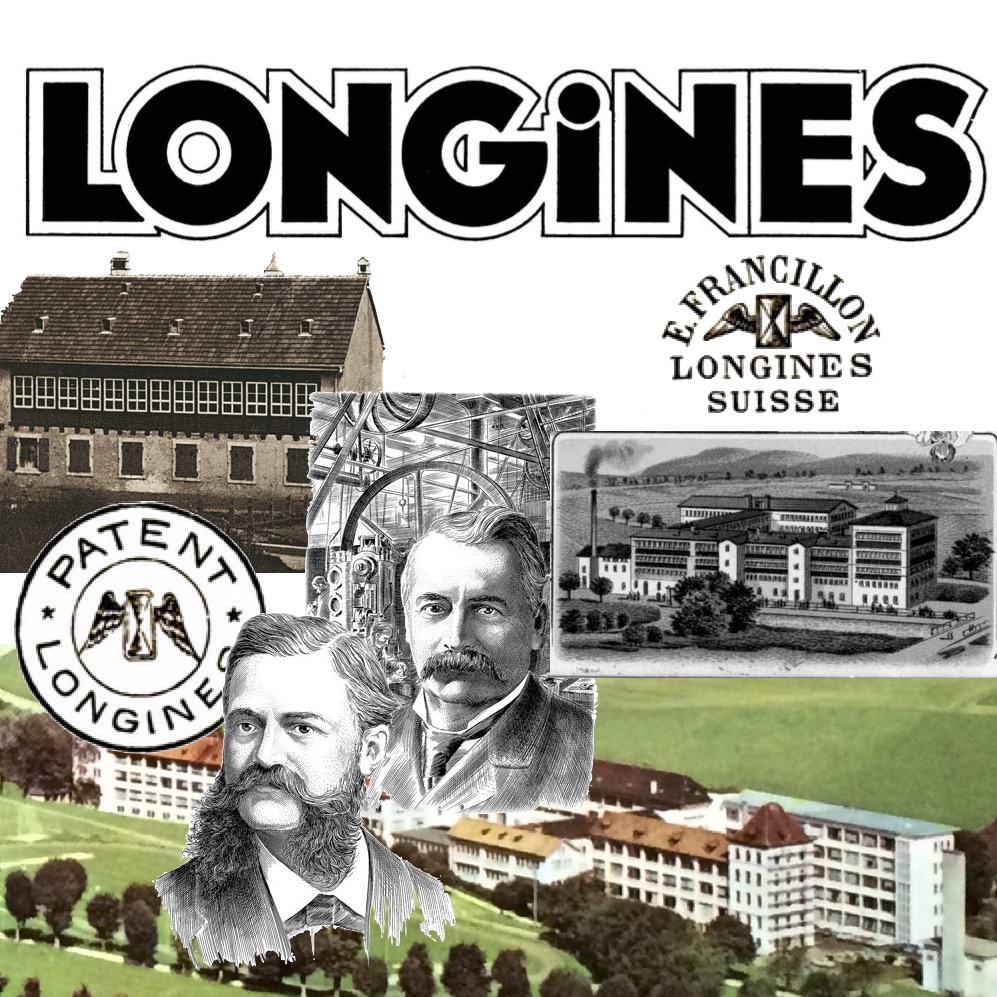
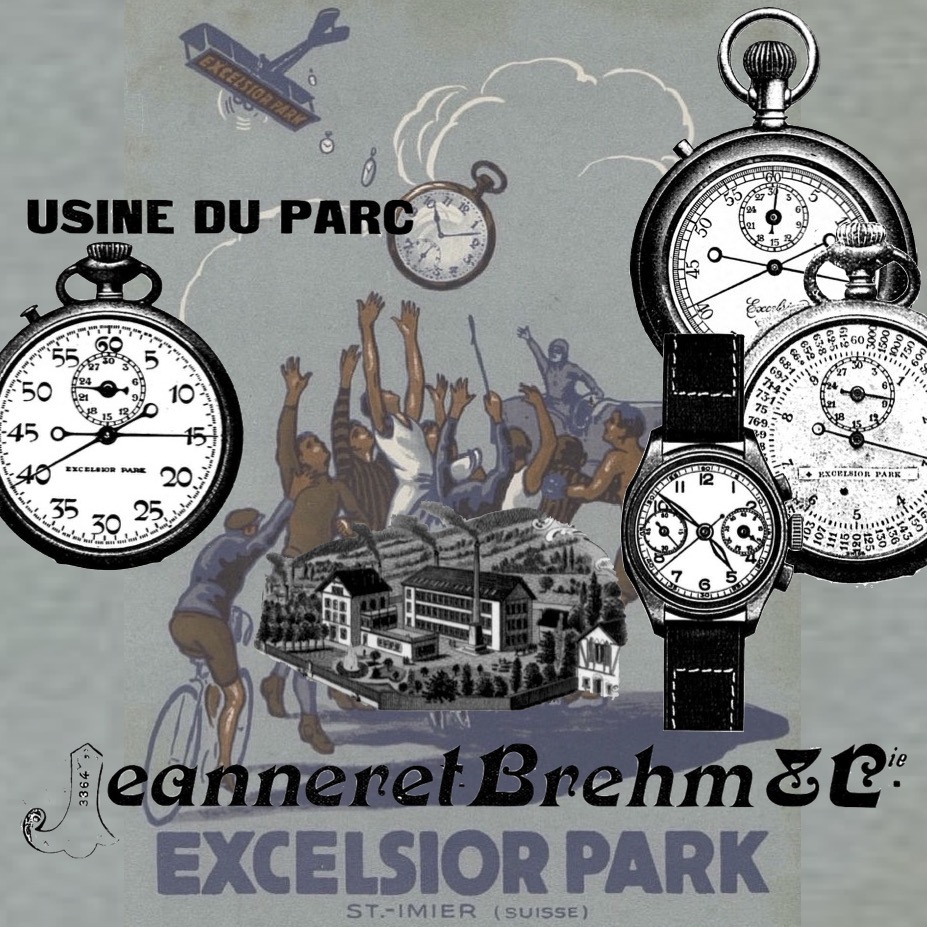
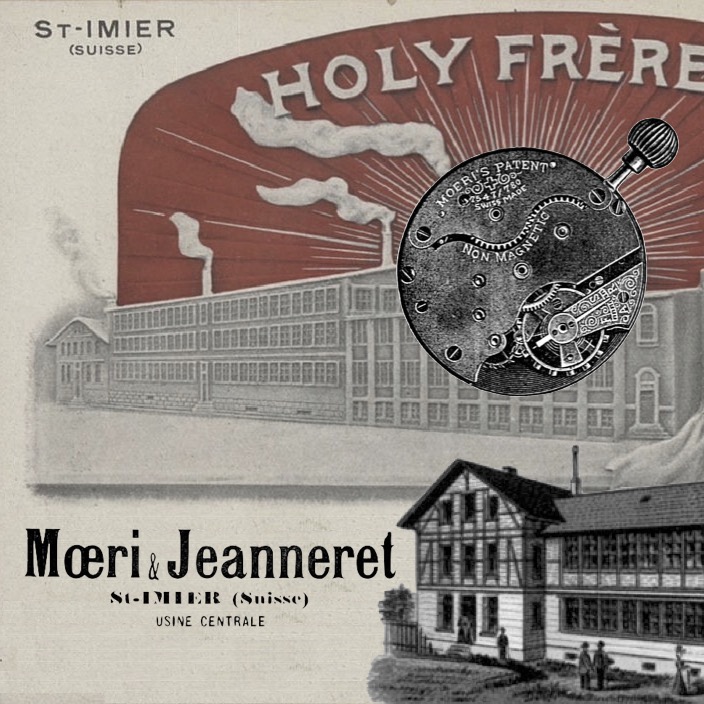
Thanks, very nice read and information, very detailed and even more than i did find on my earlier search a few years back when finding my own Berna chronograph valjoux 22. Posted it on Watchprosite and on my IG ; Ron___W